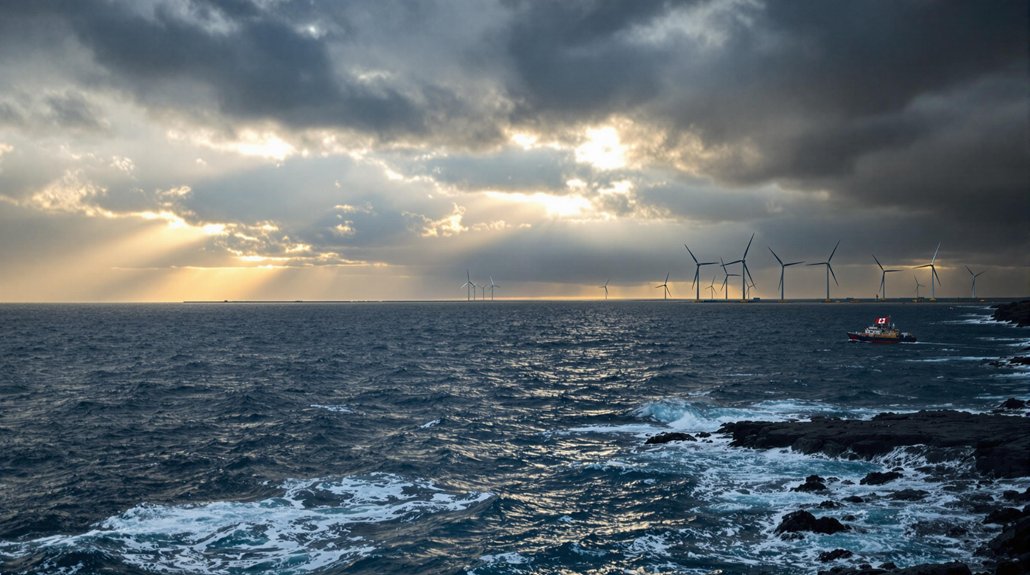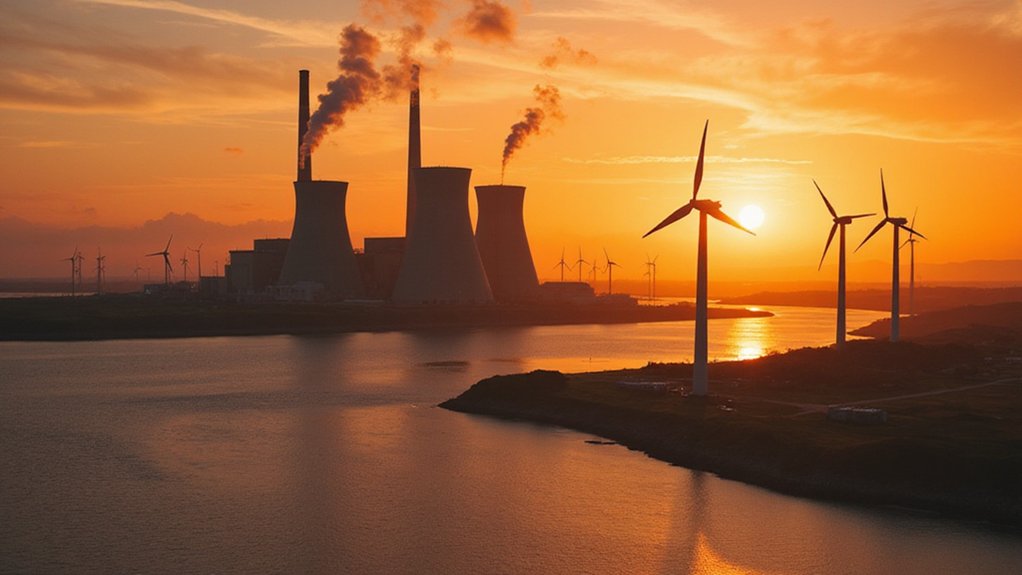Europe’s revolutionary highway project combines solar roads with 26 vertical axis wind turbines to generate a whopping 40 million kilowatt-hours annually. The system captures energy from both sunlight and vehicle-generated wind, powering thousands of homes with zero emissions. No extra land needed. Started in the Netherlands, this tech has spread across multiple European countries. Pretty clever use of infrastructure that would just sit there anyway. The future’s looking brighter – and windier.
Innovation roars down European roads, and it’s not just the cars making noise. A groundbreaking highway project has transformed ordinary asphalt into a clean energy powerhouse. The system combines solar road technology with strategically placed wind turbines. Pretty smart, right? While most infrastructure just sits there taking up space, this one’s actually pulling its weight.
Infrastructure that multitasks—generating clean energy while vehicles zoom by. That’s not just smart, it’s revolutionary.
The solar road movement kicked off in the Netherlands in 2014 with SolaRoad. France followed suit in 2016, revealing their ambitious “Wattway” in Normandy. Germany, Poland, and Hungary jumped on the bandwagon too. These aren’t just fancy pavements. They’re photovoltaic panels covered with durable, transparent material tough enough for vehicles to drive over. Some even feature LEDs for road markings and heating elements to melt snow. Practical and futuristic.
What makes this particular stretch exceptional are the 26 vertical axis wind turbines running alongside it. They’re specially designed to capture wind from passing vehicles. Not wasting a breeze. The turbines complement the solar panels perfectly, generating power even when the sun decides to take a day off.
Together, this dynamic duo produces a whopping 40 million kilowatt-hours annually. Enough juice to power thousands of homes and businesses. Excess energy gets fed back into the local grid. It’s like getting a two-for-one deal on infrastructure.
The environmental benefits are pretty obvious. Less carbon emissions. No extra land needed. Decreased dependence on fossil fuels. The carbon footprint of these innovative roads is also lower than standard photovoltaic panels, making them an even more environmentally friendly option. Solar and wind power combinations like this represent clean energy sources that produce no smoke or pollution while operating.
But nothing’s perfect. The system faces challenges – high installation costs, maintenance concerns, and efficiency issues from dirt accumulation and shading. Not to mention the whole weather-dependent thing.
Despite the hurdles, expansion plans are underway for other European countries. Researchers are working to improve efficiency and integrate these roads with smart grid systems. Some are even exploring direct-from-road electric vehicle charging. This innovative project was born from a local government competition to repurpose old viaducts in environmentally beneficial ways. The future looks bright. And clean. And right under our wheels.








